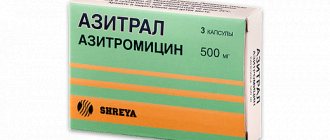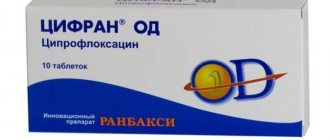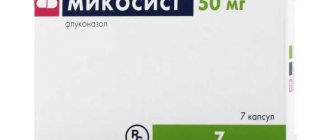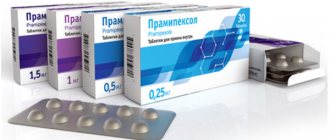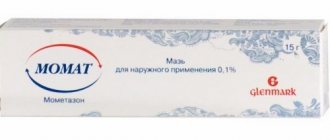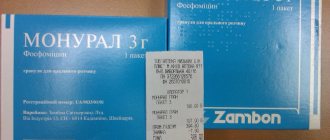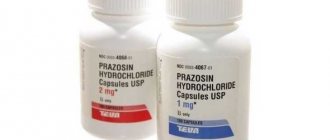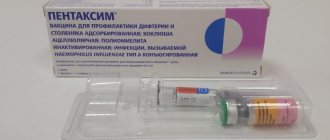Compound
Composition of Dexamethasone in ampoules: dexamethasone sodium phosphate (4 mg/ml), glycerin, propylene glycol, disodium edetate, phosphate buffer solution (7.5 pH), methyl and propyl parahydroxybenzoate, water for injection.
Dexamethasone tablets contain 0.5 mg of the active substance dexamethasone sodium phosphate , as well as lactose in the form of monohydrate, MCC, colloidal anhydrous silicon dioxide, magnesium stearate, croscarmellose sodium.
Dexamethasone eye drops: dexamethasone sodium phosphate (1 mg/ml), boric acid, benzalkonium chloride (preservative), sodium tetraborate, Trilon B, water d/i.
Pharmacodynamics and pharmacokinetics
Dexamethasone is a synthetic corticosteroid (adrenal cortex hormone). Wikipedia and the Vidal reference book indicate that the substance, when interacting with cytoplasmic receptors, forms complexes that penetrate the cell nucleus and stimulate the synthesis of m-RNA.
m-RNA, in turn, induces the biosynthesis of proteins (including enzymes that regulate vital processes in cells), which inhibit phospholipase A2, the release of arachidonic acid, the biosynthesis of endoperoxides, LT and PG, which are mediators of allergies, inflammation, pain, etc. .
Inhibits the activity of proteases, collagenase, hyaluronidase, as well as the release of inflammatory mediators from eosinophils, promotes:
- normalization of the function of the intercellular matrix of bone and cartilage tissue;
- decreased capillary permeability;
- stabilization of membranes (including lysosomal) cells;
- inhibition of the release of cytokines from macrophages and lymphocytes (gamma interferon and IL);
- involution of lymphoid tissue;
- acceleration of protein catabolism;
- decreased glucose utilization;
- increased gluconeogenesis in the liver;
- decreased absorption and increased excretion of Ca;
- Na and water retention;
- delayed ACTH secretion.
After oral administration, the substance is almost completely absorbed. The bioavailability of the drug in tablet form is up to 80%. Cmax and the maximum effect of use are observed after one to two hours. The effect after taking a single dose lasts for 2.75 days.
Binding to plasma proteins (mainly albumin ) is approximately 77%.
The substance is fat-soluble, therefore it is able to penetrate both inside the cell and into the intracellular space. The action manifests itself in the central nervous system ( pituitary gland , hypothalamus ), which is due to the ability of dexamethasone to bind to cell membrane receptors.
In peripheral tissues it binds and acts through cytoplasmic receptors. Dexamethasone breaks down in the cell (at the site of its action). Metabolization occurs primarily in the liver and, partly, in the kidneys and other tissues. The main route of elimination is through the kidneys.
Indications for use
Why is Dexamethasone prescribed in injections and tablets?
Diseases amenable to systemic treatment are indicated for the use of Dexamethasone (if necessary, the drug can be used as an addition to the main therapy). The solution is administered intravenously and intramuscularly in cases where oral administration or local treatment is ineffective or impossible.
The drug Dexamethasone (injections and tablets) is indicated for rheumatic and allergic diseases, cerebral edema , shock of various origins, certain kidney diseases, autoimmune disorders, respiratory tract diseases, blood diseases, acute severe dermatoses, IBD, during HRT (for example, in case of insufficiency adenohypophysis/adrenal glands).
Why is Dexamethasone eye drops prescribed?
In ophthalmological practice, the use of the drug is advisable for allergic and non-purulent conjunctivitis, iridocyclitis , iritis , keratitis , keratoconjunctivitis without damaging the integrity of the corneal epithelium, blepharoconjunctivitis , scleritis , blepharitis , episcleritis , sympathetic ophthalmia , as well as for relieving inflammation after surgery or eye injury.
What is instillation of the drug into the ear indicated for?
The drug is instilled into the canal of the external ear for inflammatory and allergic diseases of the ear.
Dexamethasone for coronavirus COVID-19
Based on the results of clinical trials (not yet published), it can be assumed that Dexamethasone is most effective in treating severe cases of coronavirus. ventilators decreased by a third compared to the control group.
Mortality decreased by 20% in patients receiving oxygen therapy without mechanical ventilation. No effect was observed in the treatment of mild forms of coronavirus.
Contraindications
The only contraindication for systemic use in a short course for health reasons is hypersensitivity to the components of the drug.
Contraindications to the use of Dexamethasone (IV, IM, per os):
- infectious and parasitic diseases of a bacterial or viral nature;
- systemic mycoses ;
- immunodeficiency states;
- the period before and after preventive vaccination (especially before and after antiviral vaccinations);
- myasthenia gravis , systemic osteoporosis ;
- gastrointestinal diseases ( ulcer , colitis , diverticulitis , newly created intestinal anostomosis, etc.);
- CVD diseases;
- diabetes;
- psychosis;
- acute liver and kidney failure .
Intra-articular administration is prohibited when:
- joint instability;
- pathological bleeding;
- previous arthroplasty;
- transarticular fractures;
- the presence of infected lesions of joints, intervertebral spaces,
- periarticular soft tissues;
- severe periarticular osteoporosis .
Contraindications to the use of eye drops:
- tuberculous, fungal, viral eye lesions;
- trachoma;
- glaucoma;
- epithelial damage to the cornea.
Instillations into the ear canal are contraindicated if the integrity of the eardrum is compromised.
Side effects of Dexamethasone
The incidence and severity of side effects of Dexamethasone depend on the dosage of the drug, duration of use of the drug, and the possibility of use taking into account the circadian rhythm.
Systemic side effects of Dexamethasone:
- from the sensory organs and the nervous system: delirium, euphoria, depressive/manic episode, disorientation, hallucinations, increased ICP with congestive optic disc syndrome (benign intracranial hypertension , the development of which is a consequence of a rapid reduction in the dosage of the drug and is accompanied by blurred vision and headaches), vertigo , sleep disturbances, headache, dizziness, loss of vision (when the solution is administered in the area of the nasal concha, head, neck, scalp), cataract with localization of clouding in the back of the lens, glaucoma , eye hypertension with the possibility of damage to the optic nerve, development of secondary viral/fungal infection of the eye, steroid exophthalmos ;
- from the cardiovascular system: arterial hypertension , myocardial dystrophy , ECG changes characteristic of hypokalemia, hypercoagulation , thrombosis , if predisposed - the development of CHF, with parenteral use - rushes of blood to the head;
- from the digestive system: nausea, hiccups, vomiting, pancreatitis , erosive and ulcerative lesions of the digestive canal, increased/decreased appetite, erosive esophagitis;
- metabolic disorders: peripheral edema due to water and Na+ retention, nitrogen deficiency, hypocalcemia , hypokalemia , weight gain;
- endocrine disorders: hyper- or hypocorticism syndrome, manifestation of latent diabetes mellitus , steroid diabetes, growth retardation in children, irregular menstrual bleeding, hirsutism ;
- from the locomotor system: joint or muscle pain, back pain, steroid myopathy, tendon rupture, osteoporosis , muscle weakness, decreased muscle mass; with intra-articular administration of the solution, the intensity of pain in the joint may increase;
- from the skin: stretch marks , ecchymosis and petechiae, steroid acne, thinning of the skin, increased sweating, poor wound healing;
- hypersensitivity reactions: urticaria , skin rashes, difficulty breathing, stridor, facial swelling, anaphylactic shock .
Also possible: decreased immune system function, activation of infectious diseases, withdrawal syndrome (general weakness, lethargy, nausea, anorexia, abdominal pain).
Local reactions when injecting the solution: numbness, burning, paresthesia, pain, infection at the injection site, scarring at the injection site, hypo- or hyperpigmentation. When administered intramuscularly, the process of atrophy of the subcutaneous tissue and skin may begin.
Reactions to the use of ophthalmic forms: long-term (more than 3 weeks in a row) use of eye drops may be accompanied by an increase in intraocular pressure, the formation of glaucoma with damage to the optic nerve fibers, posterior subcapsular cataracts , visual impairment (for example, loss of its fields), thinning/perforation cornea, spread of infection (bacterial or herpetic).
In case of hypersensitivity to benzalkonium chloride or dexamethasone blepharitis and conjunctivitis are possible .
Local reactions are manifested by burning and itching of the skin, irritation, and dermatitis.
Interaction with other pharmacological agents
It is very important to pay attention to the drugs that the patient takes along with Dexamethasone, since combining this drug with others may reduce the effectiveness of treatment or even lead to unpredictable consequences
For example, the combined use of the drug of interest to us with substances such as phenytoin, ephedrine, theophylline, phenobarbital reduces the concentration of Dexamethasone, and therefore reduces its effectiveness. On the other hand, the use of adrenocorticotropic hormone enhances the effect of the drug of interest to us in the human body.
Here is a list of other consequences from using a synthetic hormone with other drugs:
- Diuretics enhance the process of potassium excretion, thereby contributing to the development of heart failure.
- Sodium-based products can cause swelling and increased blood pressure.
- Cardiac glycosides. Their combined use with Dexamethasone increases the risk of developing ventricular extrasystole.
- Ethanol, alcohol. The risk of developing ulcerative tumors in the gastrointestinal tract and bleeding increases.
- Insulin and other hypoglycemic agents. Due to combined use with Dexamethasone, the effectiveness decreases.
- Vitamin D. Its effect on the body is reduced.
- Vitamin C. “Dexamethasone” accelerates the process of excretion of acetylsalicylic acid.
- Paracetamol-based products. The result of taking two drugs together can be intoxication of the body.
- Anticoagulants and thrombolytics. The risk of ulcers and bleeding may increase.
- Indomethacin-based drugs increase the number and severity of side effects from the use of Dexamethasone. This may also apply to medications whose active ingredients are ketoconazole and cyclosporine.
- Neuroleptics, as well as azathioprine, increase the risk of cataracts.
You can learn more about the interaction of this drug with other medications at an appointment with a specialist.
Instructions for use of Dexamethasone (Method and dosage)
Dexamethasone injections, instructions for use
Methods of administration of Dexamethasone: intravenous, intramuscular, local.
The daily dose is equivalent to 1/3-01/2 of the oral dose and ranges from 0.5 to 24 mg. It should be given for 2 injections. Treatment is carried out in the minimum effective dose and for the shortest possible course. The drug is discontinued gradually. For long-term use, the highest dose is 0.5 mg/day.
Injections are prescribed for emergency conditions, as well as in cases where oral administration is not possible. In emergency conditions, higher doses of the drug (4-20 mg) are allowed, and the dose is repeated until the required therapeutic effect is achieved. The daily dose in rare cases exceeds 80 mg.
Once the required results are achieved, treatment is continued at a dose of 2-4 mg, gradually reducing it until the drug is completely discontinued.
To maintain a long-term effect, injections are indicated at intervals of 3-4 hours. It is also possible to administer Dexamethasone intravenously by long-term drip infusion.
After completion of the acute phase of the disease, the patient is transferred to taking the drug orally.
No more than 2 ml of the product can be injected into the muscle at the same place.
The treatment regimen depends on the indications:
- for shock - 2-6 mg/kg IV bolus, repeated injections - every 2-6 hours or as a long-term infusion using a dose of 3 mg/kg/day. The drug is prescribed as an addition to the main antishock therapy. The administration of these doses is permissible only for conditions that threaten the patient’s life, and, as a rule, this period lasts up to 72 hours.
- For cerebral edema (CBE), treatment begins with a dose of 10 mg (iv), then - until symptoms stop (within 12-24 hours) - 4 mg is administered every 6 hours. After 2-4 days, the dose is reduced and Dexamethasone administration is stopped within 5-7 days.
- For cancer, maintenance therapy may be required - 2 mg IV or IM 2 or 3 times a day.
- In case of acute AMG, the patient requires short-term intensive therapy. The loading dose of the drug for an adult is 50 mg, for a child weighing up to 35 kg - 20 mg (injected into a vein). After this, the dose is gradually reduced while increasing the intervals between drug administrations.
- For allergies (in particular, with exacerbation of chronic diseases of an allergic nature and with acute self-limiting reactions), parenteral administration is combined with oral administration of the drug. Allergy injections are given only on the first day, injecting the patient with 4 to 8 mg of Dexamethasone into a vein. On days 2-3, take 1 mg of the drug orally 2 times, on days 4-5 - 2 times 0.5 mg, on days 6-7 - 0.5 mg (once). On day 8, the effectiveness of treatment is assessed.
When status asthmaticus requires immediate intravenous administration of the drug, the combination Dexamethasone + Eufillin . The first medicine reduces the release of mediators ( heparin , histamine , serotonin ) from the cell, protects tissues from destructive processes, prevents the formation of arachidonic acid metabolites, and Eufillin reduces the resistance of blood vessels, relieves bronchospasm , inhibits platelet aggregation and dilates coronary vessels.
Instructions for Dexamethasone in ampoules for topical use
When applying the solution topically, 2 to 4 mg is injected into large joints, and 0.8 to 1 mg into small joints. Treatment of soft tissue infiltrates involves the use of 2-6 mg of the drug. 1-2 mg of the drug should be injected into the nerve ganglia, 2 to 3 mg into the joint capsules, and 0.4 to 1 mg into the synovial vagina. The dose is administered once. The course lasts from 3-5 to 14-20 days.
For children, the drug is administered in minimally effective doses.
Use of Dexamethasone in ampoules for inhalation
Inhaled use of Dexamethasone is indicated for acute inflammatory diseases of the respiratory tract (for example, bronchitis or laryngitis , as well as bronchial obstruction ).
Inhalations with Dexamethasone for children should be done 3 times a day, mixing 0.5 ml of the drug with 2-3 ml of saline solution. As a rule, treatment is continued for 3 to 7 days.
You can dilute the drug in saline in a ratio of 1:6, and then use 3-4 ml of the prepared solution for inhalation.
Dexamethasone tablets, instructions for use
The dose for oral administration is selected individually depending on the type of disease, the activity of its course and the nature of the patient’s response to the prescribed treatment.
The average daily dose ranges from 0.75 to 9 mg. For severe diseases, the dose can be increased, and it is divided into several doses. The highest dose is 15 mg/day.
The optimal dosage for children is selected depending on age, and usually ranges from 2.5 to 10 mg/m2/day. It must be divided into 3 or 4 doses.
The duration of the course is determined by the nature of the pathological process and the patient’s body’s response to treatment. In some cases, Dexamethasone is continued for several months.
Liddle's test
The test with Dexamethasone is carried out in the form of small and large tests.
A small test involves prescribing the patient 0.5 mg of Dexamethasone 4 times a day at regular intervals (6 hours). Urine to determine free cortisol should be collected from 8:00 to 8:00 on the second day before the drug is prescribed and at the same time intervals after taking the required dose.
2 mg of Dexamethasone taken over the course of 24 hours suppresses the production of corticosteroids in almost every healthy person. The cortisol content 6 hours after taking the last 0.5 mg of the drug does not exceed 135-138 nmol/l. A decrease in the daily excretion of free cortisol below 55 nmol, and 17‑OX below 3 mg/day. eliminates hyperfunction of the adrenal cortex.
In hypercortisolism syndrome, no changes in drug secretion are observed.
A large test involves prescribing 2 mg once every 6 hours for 48 hours. Hypercortisolism syndrome diagnosed by reducing free cortisol and 17-OCS levels by 50 (or more) percent.
In patients with ACTH-ectopic syndrome and adrenal tumors, drug excretion rates do not change. In some cases, with ACTH-ectopic syndrome, they do not change even when taking 32 mg of Dexamethasone per day.
Dexamethasone eye drops, instructions for use
Eye drops are intended for topical use. In case of severe inflammation, in the first day or two of treatment, 1-2 drops are instilled into the conjunctival sac. every 2 hours. Further, the intervals between instillations are extended to 4-6 hours.
To prevent the development of inflammation in the first 24 hours after injury or surgery, the patient is instilled 4 times a day. 1-2 drops, then treatment is continued at the same dose, but with a smaller frequency of applications (usually the procedure is repeated 3 times a day). The course lasts 14 days.
As an alternative to drops, Dexamethasone ointment can be used. It is squeezed out into a 1-1.5 cm strip and placed behind the lower eyelid. The frequency of procedures is 2-3 during the day. You can combine the use of ointment and drops (for example, drops during the day and ointment before bed).
To treat otitis media , the drug is injected into the ear canal of the diseased ear 2-3 times a day.
3-4 drops each.
Sore joints and synthetic hormone
In this case, treatment with “Dexamethasone” is prescribed only when other treatment methods have been tried, but they have not given a noticeable result. The injections are administered slowly; sometimes the doctor may prescribe the injection of the drug not only into the muscle, but also into the joint itself.
Most often, such therapy is prescribed for serious pathological diseases, such as rheumatoid arthritis, Still's disease or ankylosing spondylitis, synovitis, bursitis, lupus, polyarthritis, scleroderma (complicated by joint damage), etc.
What is the dose of the drug administered? It is clear that in each situation the doctor prescribes the dosage individually, based on data such as the age and weight of the patient, as well as the severity of the disease. The approximate rate of the administered drug varies between 0.4 and 4 milligrams of the drug. For example, to treat a small joint, you will need to use only 0.8 or 1 milligram. Whereas for a large joint, the dose increases from two to four milligrams.
If there is a need for an injection into the tendon, then use one or two milligrams of Dexamethasone. If the drug is administered into the synovial bursa, the dose may be slightly increased (from two to three milligrams).
How often do procedures need to be performed? The drug should be administered once, with a break of three or four months. If you use the product more often or increase the dosage, this can lead to serious problems. For example, cartilage tissue may be damaged or a tendon may rupture.
special instructions
Application in bodybuilding
Taking Dexamethasone provokes a shift in metabolism towards anabolism, which, when using even a small dose of anabolic steroids, can accelerate the growth of muscle mass and make it more significant.
In addition, by suppressing the secretion of catabolic hormones , the drug helps increase endurance, accelerates the athlete's recovery after training, and suppresses pain and inflammation when ligaments and joints are damaged.
Since Dexamethasone belongs to the group of stress hormones, their use in sports is allowed only for short-term courses.
Dexamethasone in veterinary medicine
In veterinary medicine, the drug is used as an active anti-shock, anti-allergenic and anti-inflammatory agent.
Why is Dexamethasone prescribed to cats and dogs? The drug is used to treat shock conditions, injuries, arthritis, bursitis, allergic diseases, edema, poisoning, ketosis and acute mastitis.
The therapeutic dose for dogs and cats is 0.1-1 ml (depending on the size of the animal and indications).
Drug overdose
Overdose of the drug is possible only in case of prolonged excess of the recommended dosage. A clear sign of excessive use of Dexamethasone is the occurrence of one or more side effects.
To cleanse the body of excess drug, doctors may reduce the dosage or completely stop taking the medication. The specific method of treatment is determined depending on the symptoms and condition of the patient. Other known methods of removing the drug from the body are not effective.
Dexamethasone analogs
Level 4 ATC code matches:
Prednisolone
Polcortolon
Cortef
Dexazone
Metipred
Cortisone
Flosteron
Depo-Medrol
Medrol
Solu-Medrol
Diprospan
Kenalog
Analogues of solution and tablets:
- Dexazone
- Dexamethasone-Vial
- Dexamed
- Megadexane
- Dexamethasone-Ferrain
Similar preparations for eye drops:
- Dexamethasone-LENS
- Dexapos
- Ozurdex
- Maxidex
- Dexamethasonelong
The drug Maxidez, unlike other analogues, has 2 dosage forms: drops and eye ointment. Dexamethasone ointment can be replaced with Hydrocortisone .
Which is better: Prednisolone or Dexamethasone?
Prednisolone is a synthetic analogue of hydrocortisone , which is considered a standard agent with an average duration of action and is most often used in clinical practice.
Compared to Hydrocortisone, its glucocorticoid activity is 4 times higher, however, in terms of mineralocorticoid activity, Prednisolone is inferior to Hydrocortisone.
Dexamethasone is a long-acting medicine. Unlike its analogue, the drug is fluoridated. The glucocorticoid activity of the drug is 7 times higher than that of prednisolone . However, it does not have a mineralocorticoid effect.
To a greater extent than other drugs, it provokes inhibition of the hypothalamic-pituitary-adrenal axis, causes severe disturbances in calcium, lipid and carbohydrate metabolism, has a psychostimulating effect, and therefore is not recommended for long-term use.
Drug interactions
A hormonal drug in combination with Idoxuridine provokes the development of destructive processes in the tissues of the organs of vision.
The intensity of the effects of barbiturates on the body increases significantly under the influence of Dexamethasone.
The concentration of Phenytoin decreases.
Under the influence of a combination of Warfarin and Dexamethasone, the risk of bleeding increases.
Heart failure develops in cases where the hormonal drug in question and diuretics are used simultaneously.
Dexamethasone does not improve the tolerability of cardiac glycosides, and the risk of complications in the form of diseases of the gastrointestinal tract increases.
Oral contraceptives have a negative effect on the clearance of dexamethasone (the value of this indicator increases), which leads to the development of side effects.
Oral contraceptives have a negative effect on the clearance of dexamethasone.
The combination of the drug in question with non-steroidal anti-inflammatory drugs or ethanol causes the development of gastric and intestinal ulcers.
Dexamethasone during pregnancy and when planning pregnancy
Tablets are not used during treatment and breastfeeding.
Drops are not recommended during pregnancy. If used during lactation, breastfeeding should be stopped.
Injections during pregnancy are used only for health reasons (especially in the 1st trimester).
When planning pregnancy, Dexamethasone can be used in situations where the reason for the inability to get pregnant/bear a child is hyperandrogenism . During pregnancy, it is most often prescribed when there is a threat of miscarriage, when the immune system perceives the embryo as a foreign body (the drug helps suppress immune activity).
Reviews of Dexamethasone during pregnancy allow us to conclude that although the drug is in some cases the only chance to get pregnant and maintain a pregnancy, its use is almost always associated with certain inconveniences.
After all, Dexamethasone - what is it? A powerful hormonal drug. Therefore, almost all women who took it noted changes in body weight, hormonal disorders, and a tendency to depression.
Advantages and disadvantages
Despite the large number of limitations and adverse reactions, Dexamethasone has a number of advantages, including the effective treatment of diseases. Other positive characteristics include:
- A variety of forms of release of the drug, among which injections have the fastest effect.
- Ease of use of inhalations for asthma attacks.
- The drug is cheap, a package of which costs about 210 rubles.
- Quick and pronounced effect after the first dose.
- Treatment of a large number of diseases.
- Possibility of using the drug as part of complex therapy.
Drugs with such a wide range of effects often have a long list of disadvantages. Patients may be uncomfortable taking Dexamethasone because:
- It is necessary to constantly monitor changes in health while taking the drug.
- The long list of side effects is scary.
- There are restrictions on taking the medicine during pregnancy and breastfeeding.
- To test, you need to start with the lowest possible dosage.
- The drug is not available in the form of a gel or ointment.
Nevertheless, the drug is actively used in medicine. In addition, if used correctly, all the negative aspects of the treatment will go unnoticed.
Reviews about Dexamethasone
Reviews of Dexamethasone injections and reviews of Dexamethasone tablets allow us to draw the following conclusions: the drug is effective, has a wide range of indications (it is used as a remedy for allergies , for oncology , cerebral edema (including post-radiation), bacterial meningitis , for prevention and treatment vomiting and nausea during chemotherapy , to stimulate the synthesis of surfactant in the alveoli of the lungs in premature infants, when planning pregnancy, etc.), can only be used as prescribed by a doctor, in short courses and only after possible contraindications have been established.
Despite its effectiveness, the drug provokes pronounced adverse reactions, and this is its main disadvantage.
Reviews from doctors about eye drops and dosage forms for systemic use indicate that the danger of hormonal drugs is often exaggerated.
The main thing to consider when prescribing them is the presence/absence of direct contraindications. In addition, dose selection should be based on all available indicators: weight, age, test results for relevant hormones, etc.
The drug can be used in veterinary medicine. Why is Dexamethasone prescribed to animals? In principle, the medicine has the same indications as in humans. It is used for allergies, injuries, shock conditions.
Dexamethasone price, where to buy
In Russian pharmacies, the price for Dexamethasone eye drops starts from 80-150 rubles. The injections are sold for 120-170 rubles. for package No. 5, the price of tablets is from 40 rubles. Eye ointment with dexamethasone can be bought from 150 rubles.
In Ukraine, the price of Dexamethasone in 4 mg ampoules is from 15 UAH. Eye drops can be bought from 20 UAH. The price of Dexamethasone in tablets is from 30 UAH.
- Online pharmacies in RussiaRussia
- Online pharmacies in UkraineUkraine
- Online pharmacies in KazakhstanKazakhstan
ZdravCity
- Dexamethasone eye drops 0.1% bottle 10ml PAO Farmak
83 rub. order - Dexamethasone hl. drops 0.1% tube dropper 10ml RenewalАО Update PFK
126 rub. order
- Dexamethasone eye drops 0.1% 10mlS.C.Rompharm Company SrL
120 rub. order
- Dexamethasone eye drops 0.1% vial. 5ml RUP Belmedpreparaty
98 RUR order
Pharmacy Dialogue
- Dexamethasone (eye drops vial-drops 0.1% 10ml)Rompharma
126 rub. order
- Dexamethasone (eye drops vial-drops 0.1% 10ml)Farmak
85 rub. order
- Dexamethasone 0.1% eye drops 10ml dropper bottleUpdate PFC JSC
99 RUR order
- Dexamethasone (0.5 mg tablet No. 10)KPKA
41 rub. order
show more
Pharmacy24
- Dexamethasone phosphate 0.4% 1 ml No. 10 solution PAT "Farmak", Ukraine
20 UAH. order - Dexamethasone 0.5 mg No. 10 tablets KPKA, d.d., Novo Mesto, Slovenia
35 UAH order
- Dexamethasone 4 mg/ml 1 ml N5 solution AT Lekhim-Kharkiv, Ukraine
10 UAH.order
- Dexamethasone Darnitsa 4 mg/ml 10 ampoules of 1 ml injection solution PrAT" Pharmaceutical company "Darnitsa", Ukraine
28 UAH order
- Dexamethasone-Biopharma 0.1% 10 ml eye drops TOV"FZ "Biopharma", Ukraine
19 UAH order
PaniPharmacy
- DEXAMETHASONE liquid Dexamethasone suspension. eye. 0.1% 5ml Poland, Warsaw Federal Law
58 UAH order
- Dexamethasone-Darnitsa solution d/in. 4 mg/ml amp. 1 ml No. 10
28 UAH order
- Dexamethasone ampoule Dexamethasone solution d/in. 0.4% amp. 1ml No. 5 Ukraine, Darnitsa ChAO
12 UAH order
- Dexamethasone liquid Dexamethasone h/c 0.1% 10ml Ukraine, Darnitsa ChAO
15 UAH order
- DEXAMETHASONE ampoule Dexamethasone solution d/in. 4mg amp. 1ml No. 25 Slovenia, KRKA dd Novo Mesto
337 UAH. order
show more
Purchase and storage
According to the information on the packaging, the shelf life of the drug is 2 years. After the expiration date, it should be disposed of. Dexamethasone must also be hidden from children.
Drops and solution are stored at a temperature of 15 degrees. Tablets can be stored indoors at temperatures up to 25 degrees. Freezing the drug is prohibited.
You can buy the medicine only with a doctor's prescription. An example of a Dexamethasone prescription in Latin is as follows:
- Tab. Dexamethasoni 0.0005 N. 50 DS - tablets.
- Sol. Dexamethasoni 0.4% 1 ml. D. td N. 5 in ampull - injections.
- Sol. Oftan-Dexamethasoni 0.1% 5 ml - eye drops.
The recipe may vary depending on the release form and dosage.
Many patients are interested in how much Dexamethasone costs. The price in pharmacies is 110 - 200 rubles. Some of them offer discounts for pensioners, in which case the drug may cost less.
